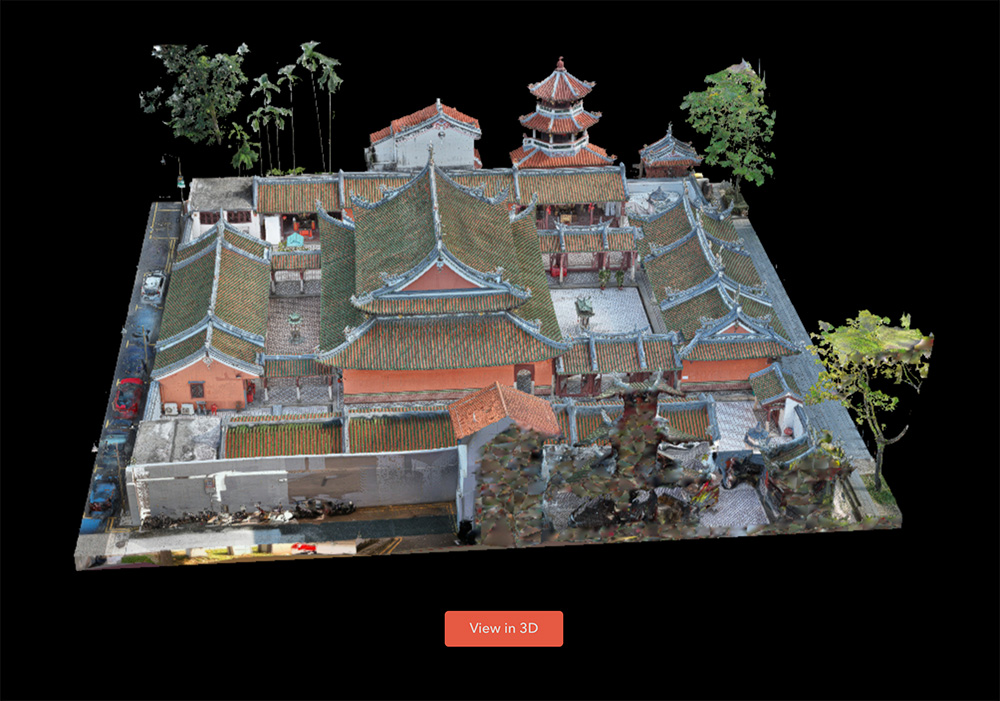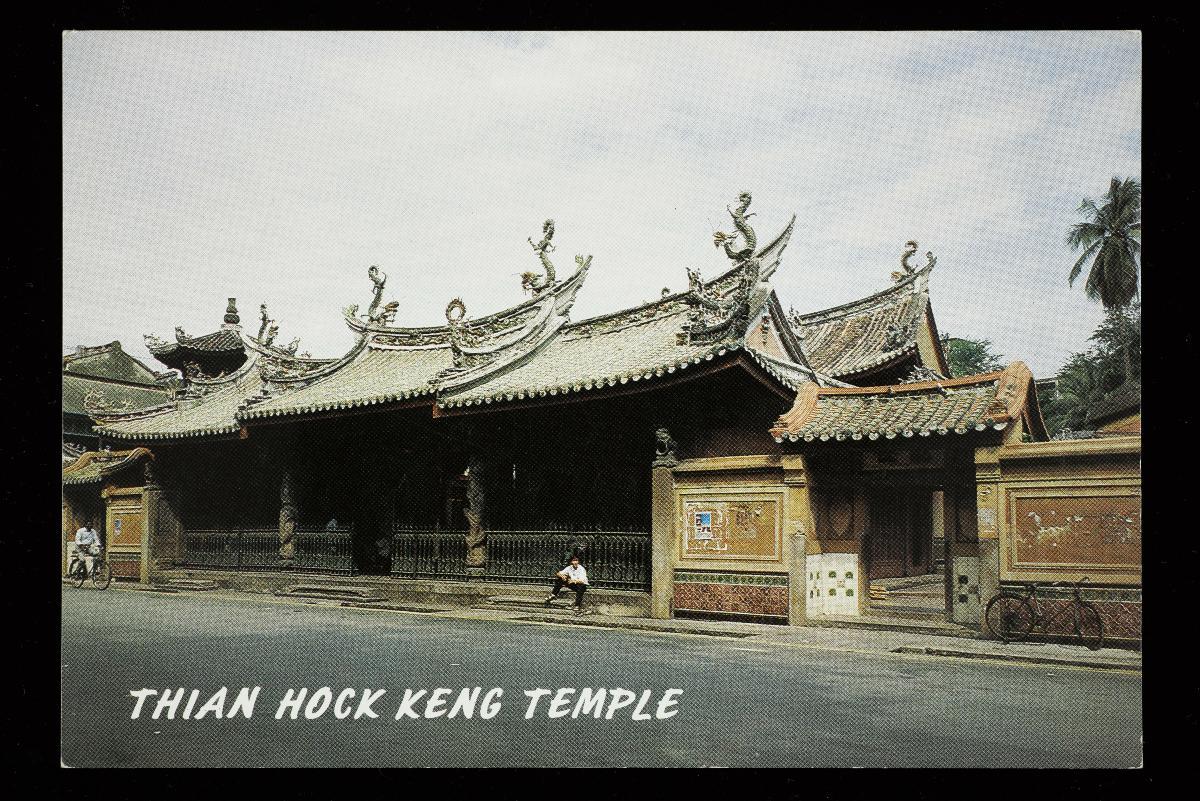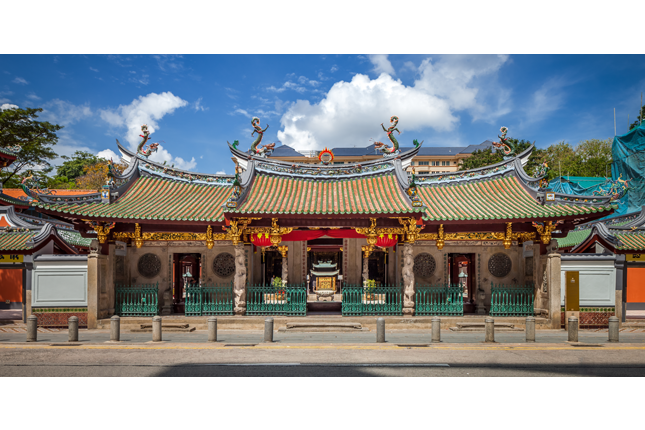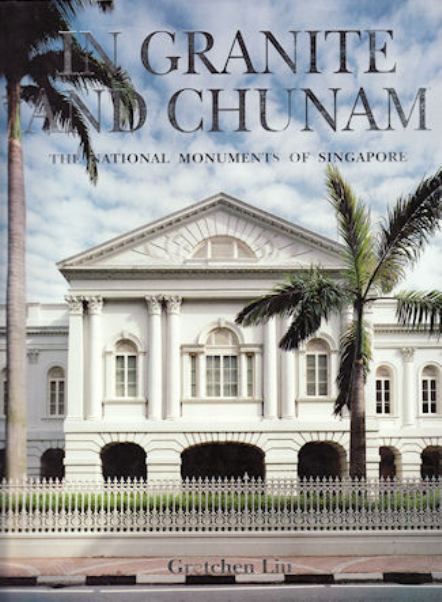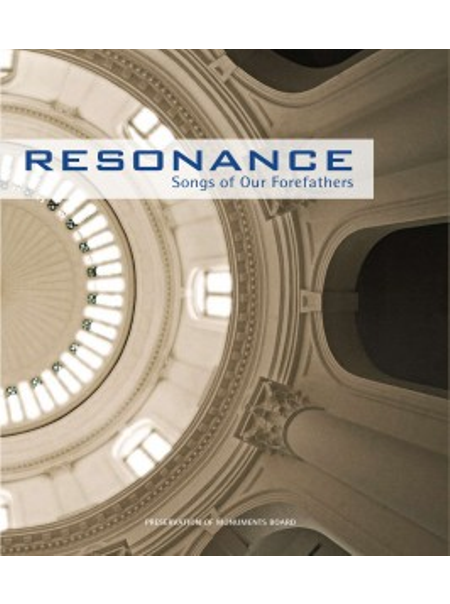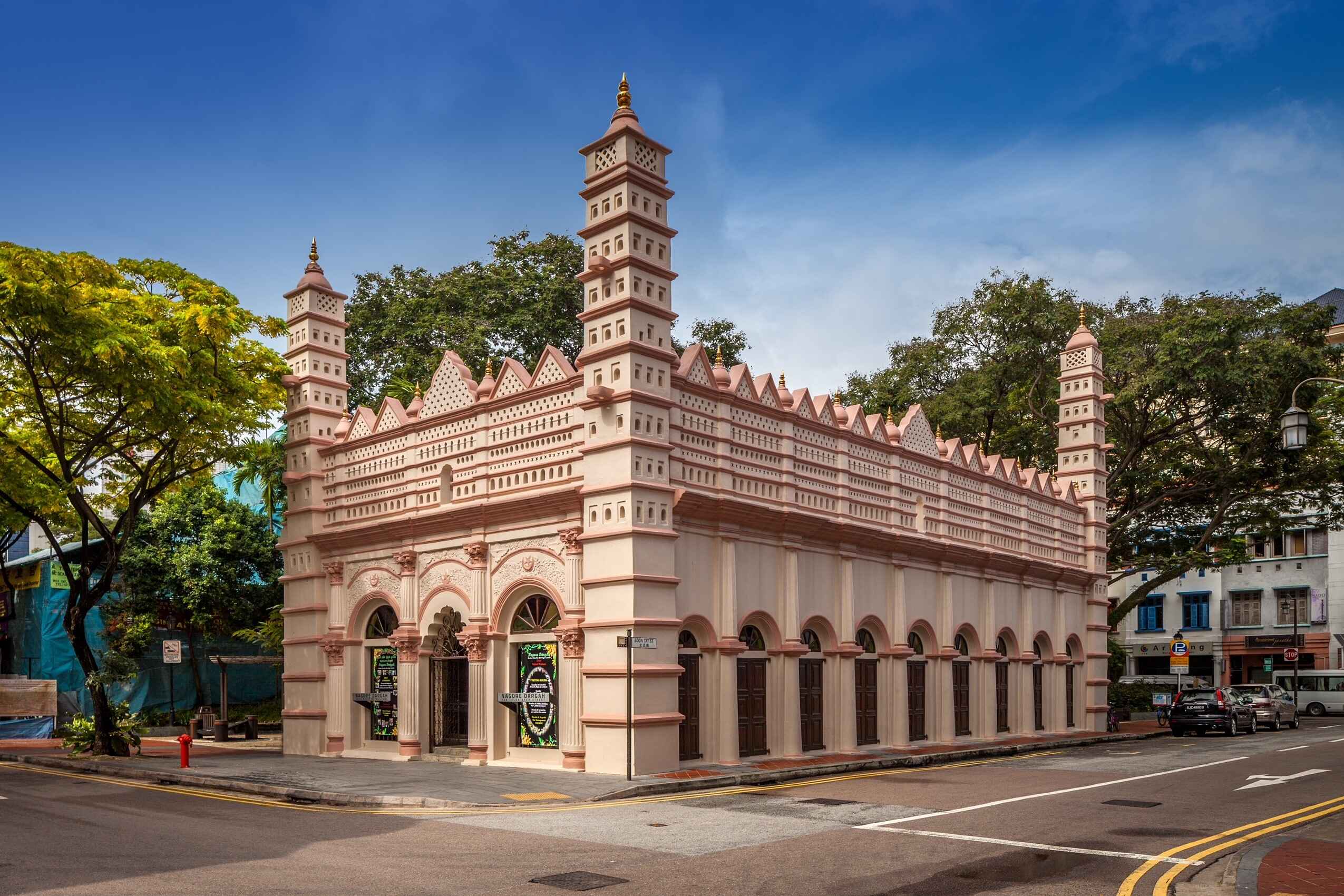Thian Hock Keng started its life as a simpler shrine, built in the 1820s along Singapore’s historic waterfront on the now-reclaimed Telok Ayer Street. The current building was built in 1842 by pioneers from the Hokkien community, on land bought in 1828 by Tan Tock Seng from the British East India Company. Early Hokkien leaders donated sums of money to the construction of the temple, which are recorded in an inscribed stone stele still situated within the temple; Tan Tock Seng’s donation of 3,074 Spanish Dollars was the largest single donation.
The temple was established by early Hokkien immigrants and dedicated to the worship of Ma Zu, the goddess of the sea, to give thanks for their safe voyage to Singapore. Lin Moniang 林默娘 was believed to have lived on Meizhou Island in Fujian Province during the 10th century and was later known as Ma Zu (妈祖—meaning Maternal Ancestor) after her deification. She is worshipped as the protector of seafarers and was particularly popular among southern Chinese immigrants. Other deities important to life in early Singapore, such as Bao Sheng Da Di (保生大帝—God of Medicine) and Guan Di (关帝— patron of numerous trades and professions) are also worshipped in the temple.
The setting of the temple on Telok Ayer Street was significant as the historic seafront was a landing point for early immigrants and so served as a fitting site for a temple for thanksgiving. Other early places of worship such as the Nagore Durgah, Masjid Al-Abrar, Fuk Tak Chi, and Yueh Hai Ching Temple are located along the same stretch.
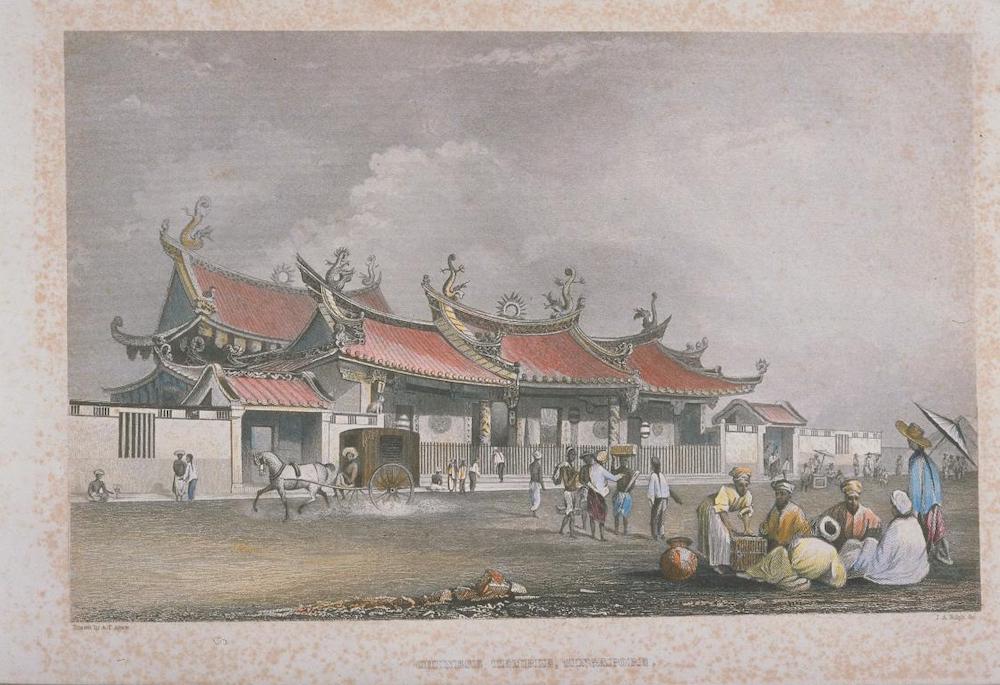
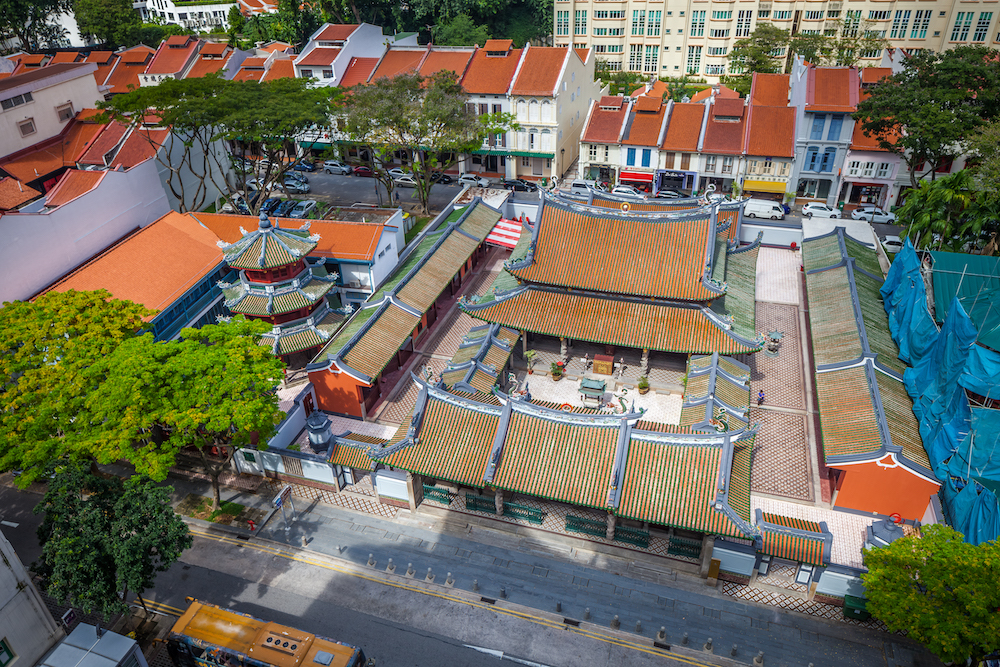
Architecture and Ornamentation
Thian Hock Keng is designed in the Hokkien Chinese style, modelled after temples in South China. The temple consists of a main prayer hall where Ma Zu is enshrined alongside Bao Sheng Da Di and Guan Di, is backed by a prayer hall for Guan Yin, and flanked on both sides with prayer spaces for other deities and ancestral tablets. Typical of Chinese temple complexes is the symmetrical plan of the site, where buildings are planned according to a central axis.
The temple is constructed from granite and wood, with granite used for the main structural walls and wood for beams and the roof. The roofs feature upturned eaves and ridges richly ornamented with pieces of broken ceramics—a southern Chinese technique known as jiannian—which portray flora, figures and mythical animals. During the restoration between 1906-1910, some less traditional elements were incorporated, including a cast-iron gate from Scotland, floor tiles from Europe, and wall tiles from Malacca.
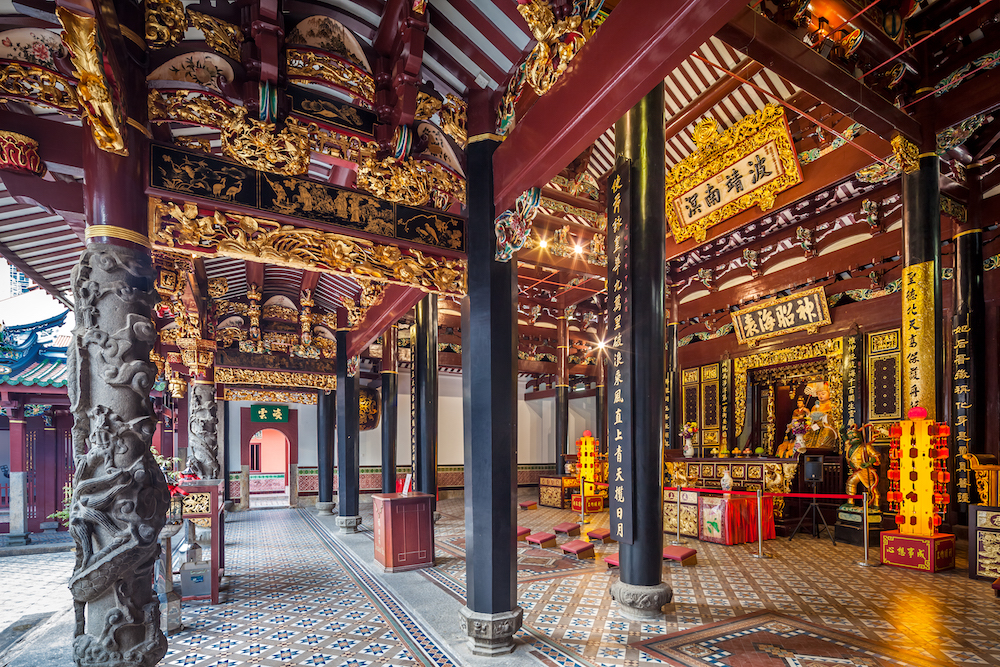
An imperial plaque in the main hall was bestowed by the Guangxu Emperor (reigned 1875-1908) in 1907, with the characters Bo Jing Nan Ming (波靖南溟—Gentle Waves over the South Seas) attributed to the emperor himself. The calligraphy was kept in a brass cylinder on top of the plaque which replicated the calligraphy and was only discovered during renovations in 1998-2000. The calligraphy was later restored and donated to the National Heritage Board.
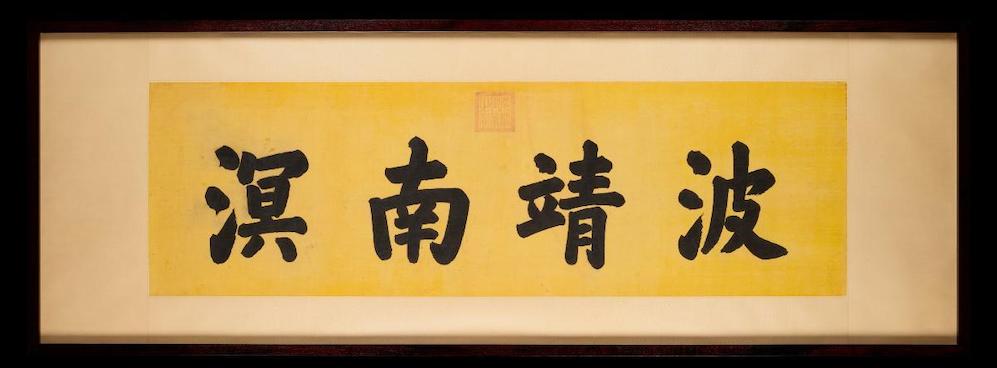
Thian Hock Keng is still managed by the Hokkien Huay Kuan, who has since built a modern office building across the street from the historic temple. The temple was gazetted a National Monument in 1973, among the first batch of historic buildings to be granted the highest status of protection.





